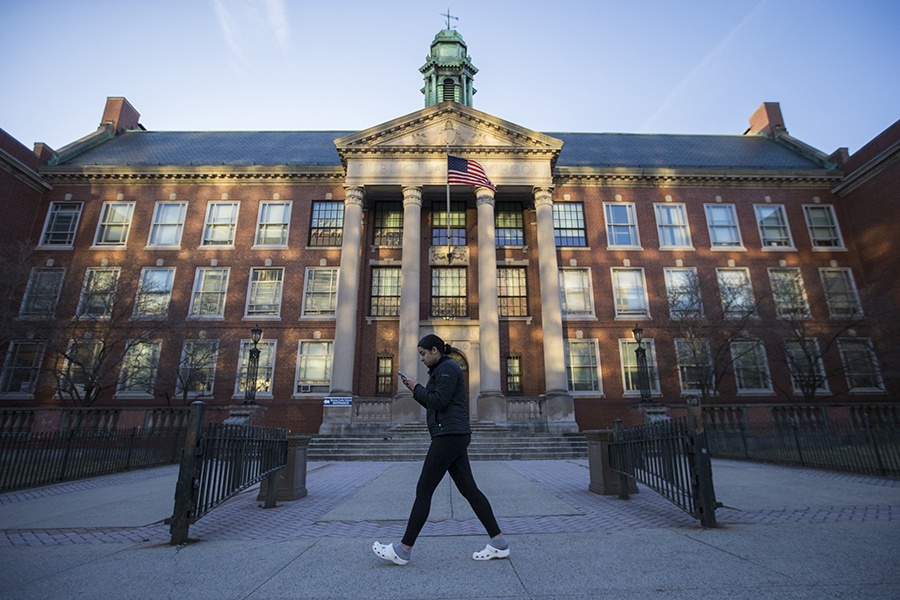Here’s Your First Look into the Massachusetts School Reopening Guidelines
Students from the second grade onward will be expected to wear masks, class sizes will shrink, and social distancing will be enforced in group spaces.

Students walk by Boston Latin Academy in Boston at the beginning of the school day, March 16, 2020. (Photo by Blake Nissen for the Boston Globe via Getty Images)
Students and teachers clad in masks. Desks arranged in neat, distanced rows. Lunch in the classroom. These are just some of the measures outlined in the Initial Fall School Reopening Guidance, the guidelines that will direct school reopenings in Massachusetts this fall.
The guidelines, which you can now read in full here, are mostly voluntary, allowing superintendents the flexibility to adjust and implement measures that best fit the needs of their schools. There are two notable omissions: A COVID-19 test will not be required for students to return to school, and schools also will not be conducting daily temperature checks, leaving that responsibility to parents at home. Schools are also not required to provide students with masks, but are advised to have disposable masks on hand in case students forget or lose their masks.
The guidelines also do not state when students will return to in-person classes. In a letter preceding the guidelines, State Education Commissioner Jeffrey Riley tells school leaders that they should be ready for three possible approaches to school this fall: A complete return to in-person classes, a mix of both in-person and remote learning, or exclusively remote learning, the way students finished out the school year this year. However, the documents also clearly state that the ultimate goal is to bring as many students back for in-person instruction as possible, and that there is a clear consensus from education and medical experts that remote learning is no substitute for in-person instruction.
Gov. Baker echoed that sentiment at his Thursday press conference, where the guidelines were formally announced. “Continued isolation poses very real risks to our kids’ mental and physical health, as well as their educational development,” he said.
The guidelines were conceived by a working group of educators, parents, public health experts and safety experts, who have been working on this project since May. Recommendations from the CDC and the WHO, along with advice from the state’s COVID-19 Command Center’s Medical Advisory Board, were also taken into account.
“In discussions with infectious disease physicians, other medical advisers, and the COVID-19 Command Center’s Medical Advisory Board, we were heartened to hear that — based on current data and research — the medical community supports the return of our students to in-person learning, with appropriate health and safety guardrails in place,” the guidelines state.
In addition to the requirements that desks be ideally 6 feet but no fewer than 3 feet apart, that students should eat breakfast and lunch in their classrooms, and that all adults and students in the second grade and older wear masks, further guidelines include:
—Large spaces, like cafeterias, gyms and libraries, should be set up to promote the greatest possible amount of social distancing.
— School nurses must wear extra PPE, like face shields and goggles, when directly treating students, and students with suspected cases of COVID should be relocated to a designated isolation room.
— Class sizes should be determined based on the square footage of classrooms and how many students can be taught with social distancing guidelines in place. (For summer programs, schools instead had a uniform cap at 10 students per class.)
— Districts should survey families multiple times throughout the summer and into the school year to help make decisions such as which children should return to school in person, which need Internet and technology access, and who needs bus transportation.


